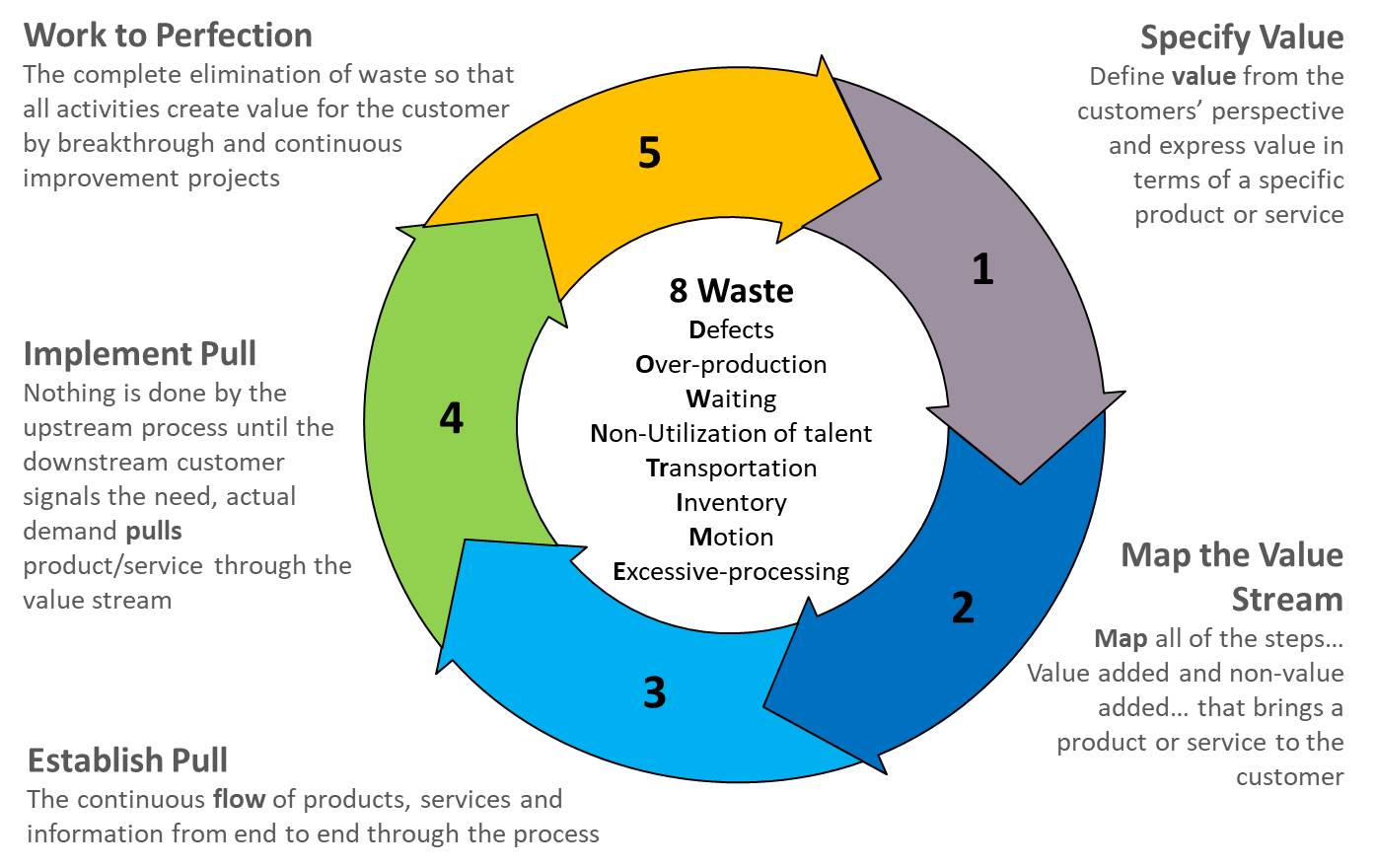What is Lean?
Lean Management or Lean is a continuous improvement methodology that focuses on delivering maximum value to the customer by eliminating waste. It first started in manufacturing and was know as Lean manufacturing or Toyota Production System. By eliminating wastes in the process, it shorten cycle time, improve throughput and productivity.
There are three types of waste in Lean – Mura, Muri and Muda. They are collectively called the 3Ms. Mura is fluctuation in the process, Muri is overload in the process and Muda is the non-value-added activities in the process.
Muda can be further sub-categorized into 8 types of non-value-added activities – they are Defects, Over-Production, Waiting, Non-utilization of Talent, Transportation, Inventory, Motion and Excessive-Processing. They form a widely known acronym called DOWNTIME.
The idea goes that if you have huge fluctuations (Mura) in the process, it then creates overburden (Muri) to the process which then leads to Muda as you try to cope with the overburden by keeping excess inventory, over-producing to cope with the fluctuations in demand and thereby, potentially resulting in more defects.
What are the 8 types of Muda Waste?
The organization’s ability to identify waste is the key to success in order to stay productive and competitive. As such, let us explore the types of Muda Waste in Lean as follows:

Defects are waste because they are mistakes that will result in rework, i.e the organization has to either put in additional resources and time to correct the defects or if the defects cannot be corrected and the output has to be scrapped, then all the efforts and resources used during the value creation process will be forfeited.
Over-production is associated with producing more than what is demanded by the customer currently. This is a waste because the organization will need to spend money to rent a place to store the over-produced products. In addition, the money that is used to produce the extra products could have been used in other areas that could yield higher returns. In short, significant working capital is tied up when there is overproduction.
Waiting is a waste because time is lost! For an organization, time is money.
Non-utilization of Talent when an organization is not fully utilizing the talent, knowledge, and skills of its employees, it will have a harmful effect on the business. For example, assigning tasks to an employee who has not been trained may result in poor customer service or produce products that are not as per specifications.
Transportation waste occurs when there is unnecessary transportation during the process. It is not just a waste of time but also energy resources to move items unnecessarily. For example, an employee drives a forklift to move raw materials from point A to point B which is unnecessary. The cost to the company is the employee’s time and the fuel used in the forklift.
Inventory is keeping raw materials or work-in-progress that is more than what’s required to produce at any given point in time.
Motion is associated with excess movement of the man and machine in producing products or services that are not value adding to the customer.
Excessive-Processing is associated with having processes on the product that are not required by the customer. For example, adding state of the art water filtration system to filter water used to flush toilet. Is this a waste?
The Five Lean Principles
Per the founder and chairman of the Lean Enterprise Institute, James Womack, the following 5 steps can be used to guide the implementation of Lean techniques.

- Specify value from the customer point of view
- Identify all the processes in the value stream for each service or product family, eliminate the processes that do not create value (i.e waste) to the customer
- Make the value-adding processes flow efficiently
- Establish delivery based on customer demand
- Constantly streamline processes to remove waste from the value stream
